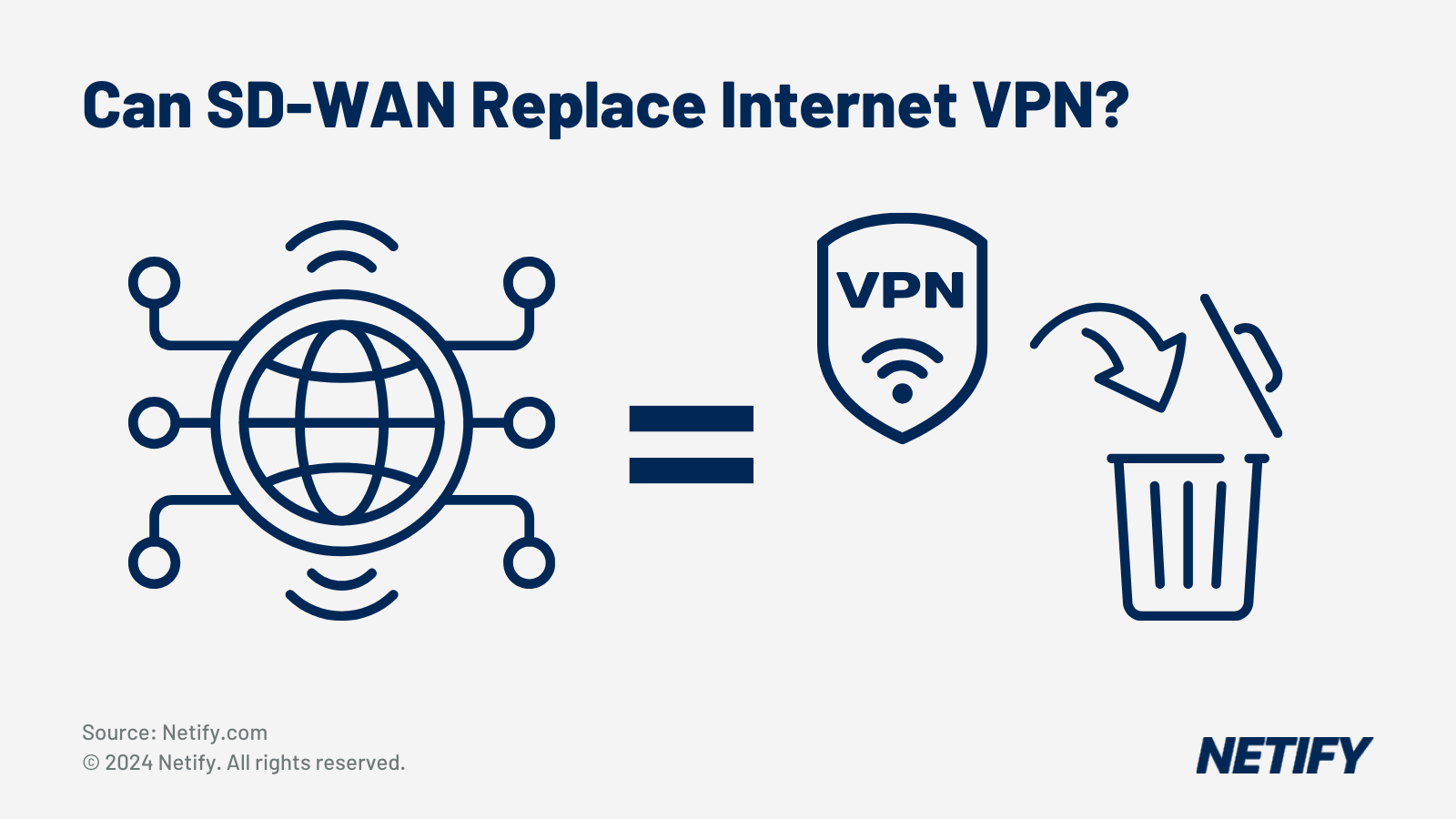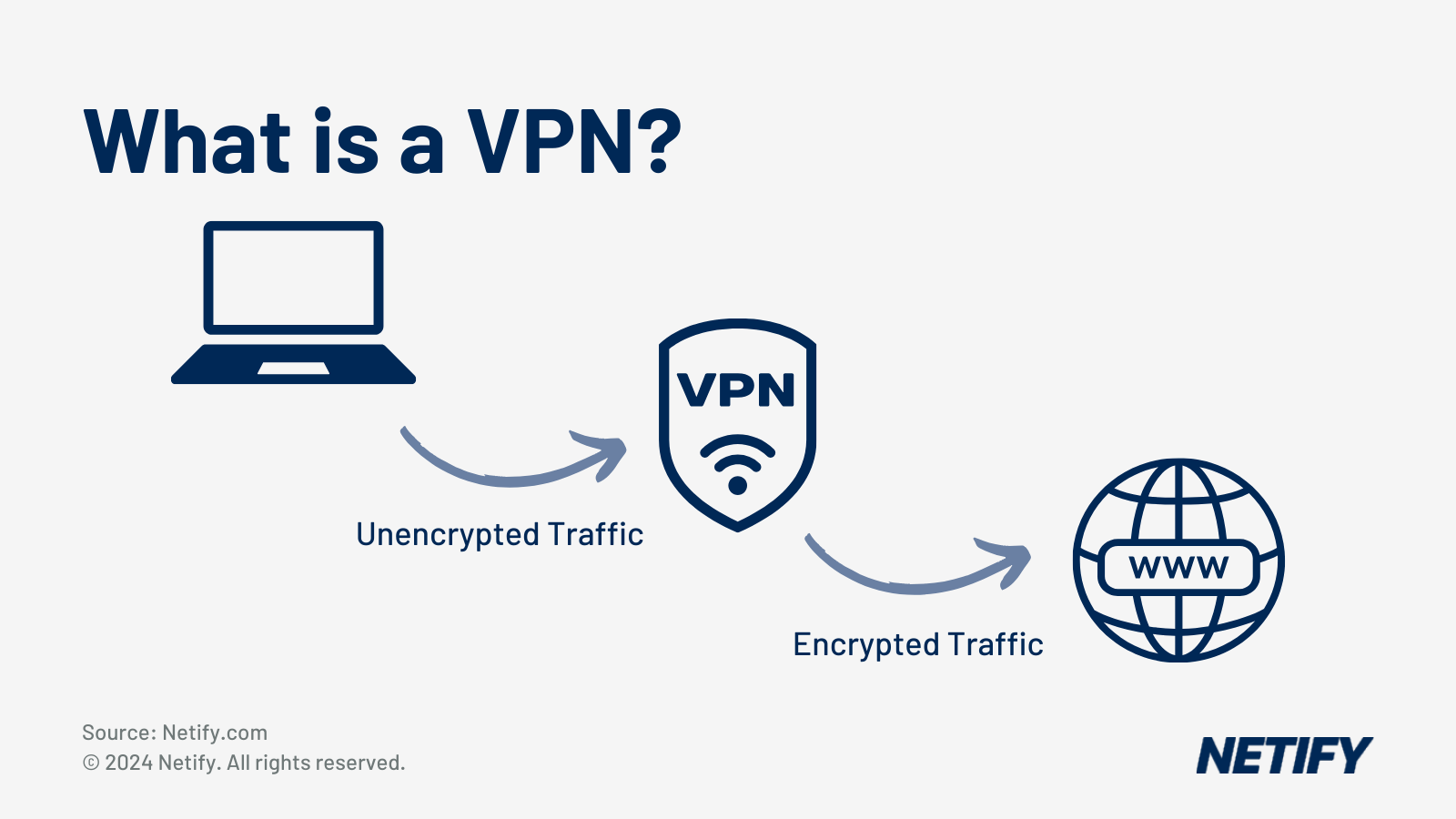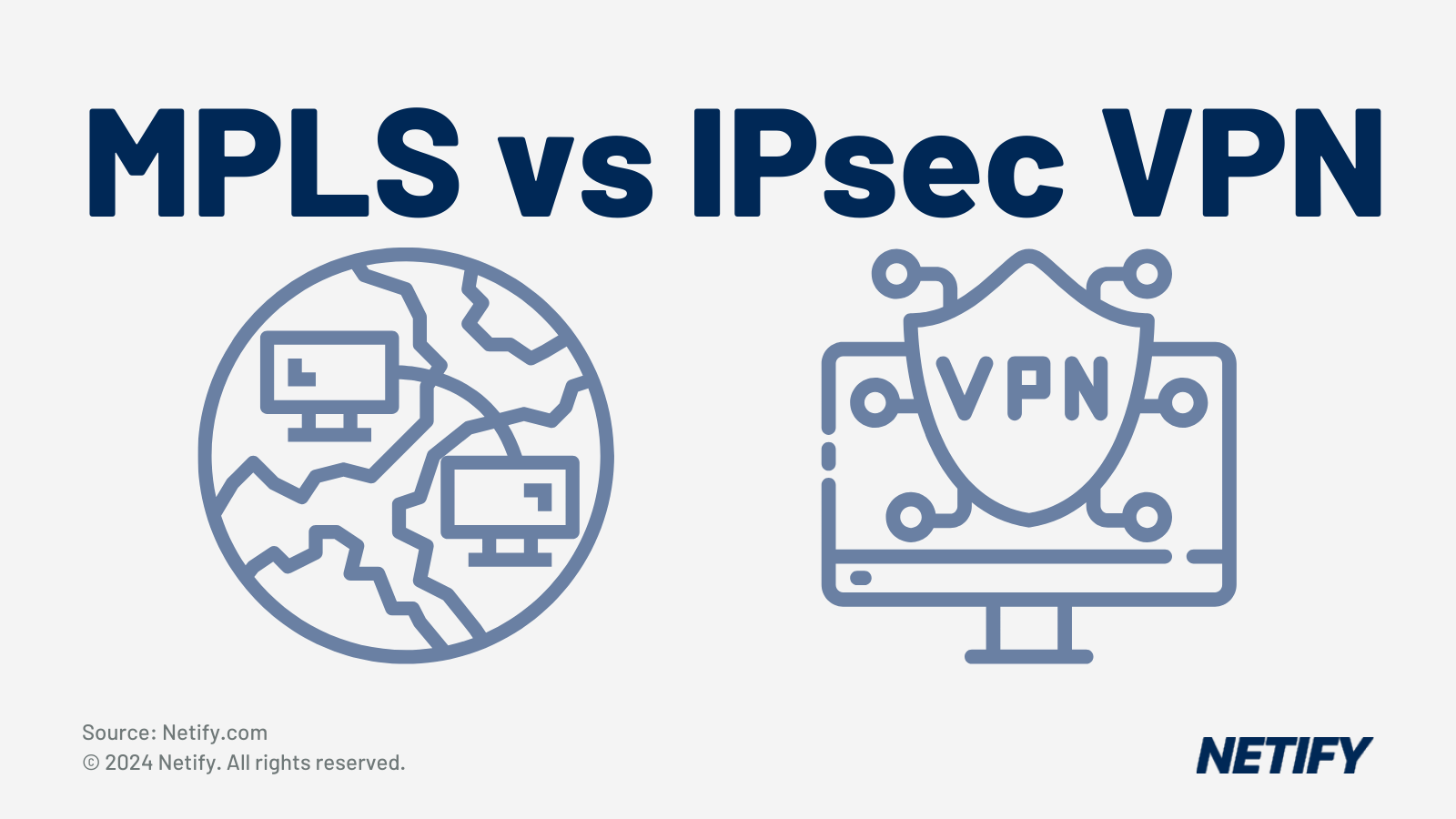Can SD-WAN replace Internet VPN?

SD-WAN is a good option to replace a basic internet VPN service. In many ways, SD-WAN is an evolution of the standard IPSec VPN service, which is still used today to meet specific or simple requirements. IPSec remains a popular encryption security option for site-to-site or user-to-user requirements where there is no breakout to the public internet. For example, when an IPSec VPN is configured as "VPN-only," all unauthenticated traffic is dropped, resulting in a secure tunnel between endpoints.

IPSec VPNs were widely adopted by enterprise businesses before the introduction of smartphones and public cloud applications. As a result, Enterprise VPN architecture requirements were much simpler, often resulting in a single breakout to the internet from a designated data center or branch office location.
However, in today's world, users require constant access to public cloud resources through phones, tablets, and laptops. This transition to a cloud-based world has resulted in increasingly sophisticated threats to data from hacking. SD-WAN is designed to meet these demands head-on by implementing highly secure feature sets that are consistently updated via the cloud.

Robert Sturt is a leading expert in SD-WAN and enterprise network solutions with extensive experience in telecommunications and network infrastructure. As a Forbes Business Council member and contributor to TechTarget, he provides strategic insights on network transformation and digital connectivity solutions. His expertise spans SD-WAN implementation, network security, and enterprise digital transformation initiatives.
Fact-checked by: Harry Yelland - Cybersecurity Writer, Netify

Related: How IPSec VPN differs from MPLS

